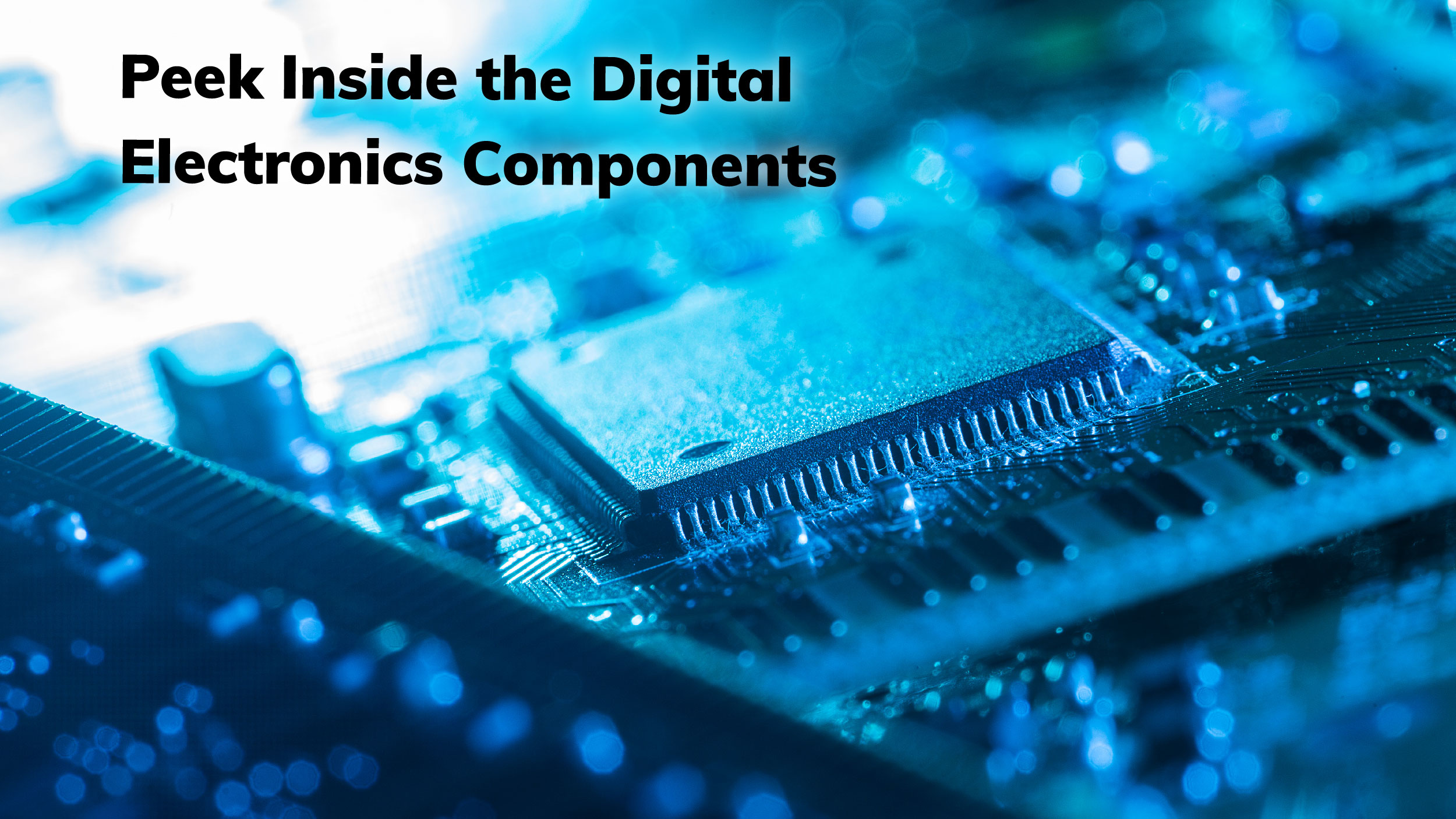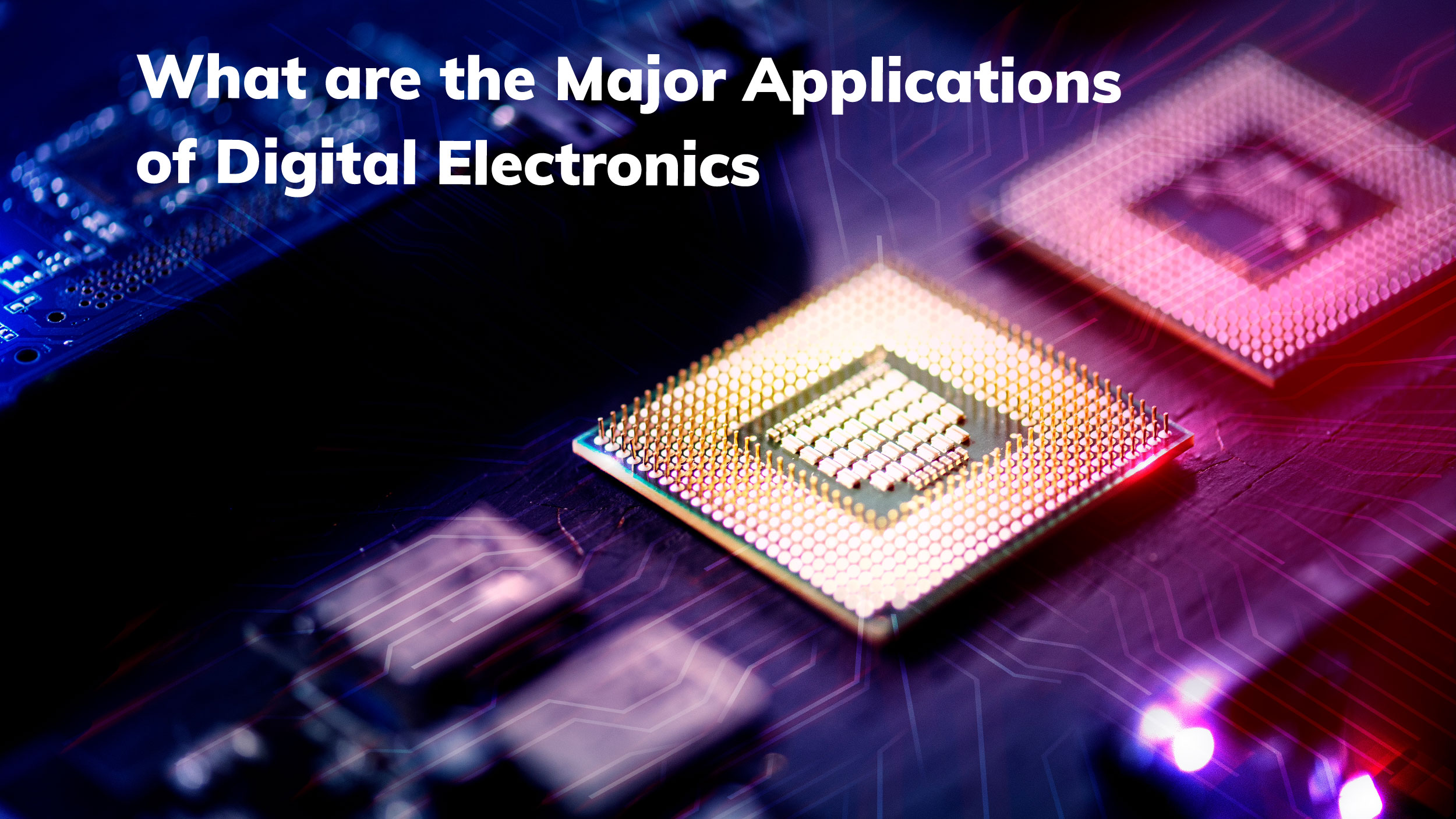Imagine a realm where everything is powered by ones and zeroes, where circuits dance to the beat of binary magic. Digital Electronics is the magical world where 0s and 1s hold the key to unlock the mysteries of modern technology! From the gadgets we can’t live without to mind-blowing supercomputers, digital electronics is the wizardry behind it all. Let’s have a quick look at what digital electronics technology is, along with its components and applications.
What is Digital Electronics?
Digital electronics is all about playing around with 0s and 1s. It’s something similar to a cool branch of electronics where you get to design, analyze, and build electronic stuff that deals with these binary values. With digital electronics, one can do all sorts of math stuff, logical operations, and even store data using those digital signals. This is what makes our modern gadgets like computers, smartphones, and digital cameras possible. They wouldn’t exist without digital electronics doing their magic.
To clarify the importance of digital electronics, let me tell you one fact that the Internet of Things (IoT) industry, which is booming at the moment, is fundamentally based on digital electronics. An unprecedented level of interconnection and automation across numerous industries will be made possible by the predicted 75.44 billion connected IoT devices that will be installed worldwide by 2025.
So, it’s quite evident that digital electronics are the backbone of all the tech we use every day.
Peek Inside the Digital Electronics Components

When it comes to digital electronics or digital circuits, we’ve got these different components that each have their own special jobs. We can categorize these components into two primary groups:
- Active components
- Passive components
Transistors and diodes are considered active components, while capacitors, resistors, inductors, etc. are considered passive. Let’s delve deeper into digital electronics components and talk about them in more detail.
● Diodes
Semiconductor materials are used in the production of diodes. They are employed to enable the flow of current in a specific direction. The digital circuit is constructed using a variety of diode types.
● Transistors
The term “transistor” refers to a semiconductor device with three terminals. The transistor’s primary job is to amplify the signal, but it can also be employed as a switching device.
As Moore’s Law says, the number of transistors on integrated circuits (chips) has been rising exponentially over time. Gordon Moore, a co-founder of Intel, predicted in 1965 that there would be a doubling of transistors on chips every year. It was later changed to double every two years. This pattern has persisted for a number of decades, greatly enhancing computational power and shrinking the size of electronic gadgets.
● Capacitors and Inductors
Capacitors are primarily used to store electrical energy. Two conducting plates are used to create a capacitor, with an insulator positioned in between. A resistor called an inductor is used to resist the current’s change. Capacitors and inductors serve as magnetic energy storage devices for electric energy.
● Logic Gates
With one output and multiple inputs, logic gates are the key components of a digital circuit. Basic gates include AND, OR, and NOT, whereas universal gates include NAND and NOR. The special gates are EX-OR and EX-NOR.
● Battery and Switch
A battery’s role is to convert chemical energy into electrical energy. It serves as an energy source. By utilizing a switch, the direction of the electric current can be changed.
● Resistors
A resistor prevents current from flowing through the circuit. There are two different kinds of resistors: fixed resistors and variable resistors. Ohm’s law serves as the basis for all resistors.
What Sets Analog and Digital Electronics Apart?
Electronics becomes much clearer when we break it down into two main categories: the “analog” world and the “digital” world. Analog electronics and digital electronics represent separate methods for processing and transmitting information.
Analog electronics represent and process information using continuous signals. In applications like radio and audio equipment and control systems, where a continuous range of values is necessary, these systems are frequently utilized. Signals can be amplified, noise can be filtered, and many more tasks can be accomplished with analog electronics. Resistors, capacitors, inductors, and transistors are a few of the most commonly employed components in analog electronics.
Contrarily, digital electronics designs represent and process information using discrete signals. Although digital systems are frequently favored because of their high degree of accuracy in data storage and transmission, they are not ideal for all applications, such as processing continuous signals. Transistors, gates, and flip-flops are among the components of digital systems that are utilized to process binary data.
Generally speaking, digital electronics are better suited to activities involving huge volumes of data and generating some accuracy loss, while analog electronics are better suited to tasks involving continuous signals and requiring great accuracy.
What are the Major Applications of Digital Electronics?

From smartphones and computers to medical equipment and transportation systems, digital electronics is the driving force behind a multitude of modern applications.
The International Data Corporation (IDC) estimates that by 2026, global spending on digital transformation will total USD 3.4 trillion. This demonstrates the growing significance of digital electronics in bringing about revolutionary improvements in several industries.
Listed below are some of the important digital electronics applications.
- Computing: In the computer world, digital electronics play a crucial role in storing, processing, and transmitting data. They are the backbone of central processing units (CPUs) and are also found in various other components like memory, storage, and input/output devices. Without digital electronics, our computers wouldn’t be able to perform all the amazing tasks they do.
- Communication: Digital electronics shine in a wide range of communication systems, from cell phones to satellite networks and the Internet. It handles the transmission and reception of data and also excels at processing and decoding signals.
- Entertainment: Digital electronics are the heart and soul of numerous entertainment devices we enjoy, such as TVs, video game consoles, and music players. They do all the heavy lifting when it comes to processing and showing images, and they are also responsible for storing and playing back our favorite audio and video content.
- Transportation: Digital electronics have a significant impact on our transportation systems – everything from vehicles to traffic control systems. They play a critical role in controlling the operation of engines and various systems in vehicles, ensuring smoother and more efficient rides.
- Medical equipment: Digital electronics are a lifeline for the medical field as devices like X-ray machines and patient monitoring systems heavily rely on digital electronics. They are instrumental in processing and displaying medical images with exceptional clarity and precision along with other tasks.
- Military: Digital electronics are integral to various military systems, providing crucial capabilities in radar systems and missile guidance systems. They are responsible for detecting and tracking objects, ensuring that the military has an accurate view of the battlefield.
- Home appliances: Many home appliances, including thermostats, washing machines, and refrigerators, employ digital electronics. They are used to manage how the appliance works as well as to track and provide information like temperature and energy usage.
- Security: Digital electronics are indispensable in security systems, serving a critical role in alarm systems and surveillance cameras. They are the brains behind detecting and monitoring activities, ensuring that potential security threats are promptly identified.
Wrapping it Up
Digital electronics technology has touched every facet of our lives, transforming the way we communicate, work, and entertain ourselves. From life-saving medical equipment to awe-inspiring entertainment devices, and from intelligent industrial automation to secure communication systems, the digital electronics designs are vast and diverse. As technology continues to evolve, the marvels of digital electronics will undoubtedly lead us to new horizons, improving our lives in unimaginable ways. Embracing these advancements responsibly will empower us to build a brighter, safer, and more connected future.




